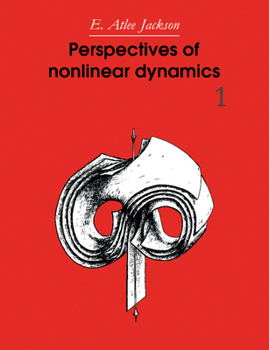Perspectives of Nonlinear Dynamics: Volume 1
Select Format
Select Condition 
Book Overview
The dynamics of physical, chemical, biological, or fluid systems generally must be described by nonlinear models, whose detailed mathematical solutions are not obtainable. To understand some aspects of such dynamics, various complementary methods and viewpoints are of crucial importance. In this book the perspectives generated by analytical, topological and computational methods, and interplays between them, are developed in a variety of contexts...
Format:Paperback
Language:English
ISBN:0521426324
ISBN13:9780521426329
Release Date:January 1992
Publisher:Cambridge University Press
Length:520 Pages
Weight:2.08 lbs.
Dimensions:1.2" x 7.5" x 9.8"
Related Subjects
Dynamics Math Mathematics Mechanics Physics Science Science & Math Science & Scientists Science & TechnologyCustomer Reviews
1 rating
Good overview
Published by Thriftbooks.com User , 22 years ago
This book is a very unusual one, not only because of its use of diagrams to get some essential points across, but it also gives counterexamples to ideas that a reader might have accepted as doctrine. In addition, although it is a book that is primarily concerned with dynamics from a mathematical point of view, there is a lot in the book that would be of interest to the physicist reader. It is too bad that the book is out of print, for it could still be used as a classroom text and as an introduction to research in the field, as there are excellent problem sets at the end of each chapter. Some of the interesting discussion in the book include: 1. A brief but very good historical outline of nonlinear dynamics, with modern nonlinear dynamics traced to the work of the mathematician Henri Poincare. 2. Early in the book, the author dispels "two myths" regarding nonlinear dynamics, namely that linear equations are easier to solve than nonlinear equations, and that an analytic solution of an equation gives the most useful information (if it exists). 3. The discussion on the existence and uniqueness of solutions to the equations of motion via the constraint of the Lipschitz condition and its allowance for mechanical systems with (near) discontinuous dynamics. The role of non-uniqueness in the analysis of bifurcation is emphasized. Most interesting is the author's brief discussion on the existence of 'universal differential equations', which have solutions arbitrarily close to any prescribed function. The author emphasizes though the non-physical nature of these equations. He then discusses systems whose solutions do not exist after a finite time. 4. The overview of simple bifurcation theory, which the author calls 'control space effects'. Detailed discussion (with excellent diagrams) is given on how the stability of a fixed point changes along a solution set as the bifurcation point is passed. This leads to a discussion of the important concept of structural stability and gradient systems. Gradient systems are extremely important dynamical systems and have wide-ranging uses in mathematics and physics. Morse theory thus arises in this discussion, and interestingly, the author compares gradient flows with Hamiltonian flows. Fixed points of gradient systems are shown to be structurally stable. Excellent figures are given in the treatment of catastrophe theory that appears thereafter. The author also gives as an example of this the famous optical bistability. 5. The excellent discussion on the suspension of the tent map. The adding of a dimension to the problem has its advantages, as the author shows in his discussion. 6. The discussion on shadowing is excellent and the author shows its relevance in numerical computations. The author is well aware that one must first prove that the system is chaotic before one can claim the (finite) computed orbits shadow true orbits. Sometimes this is forgotten in the literature on numerical analysis of chaotic dynamical sys






